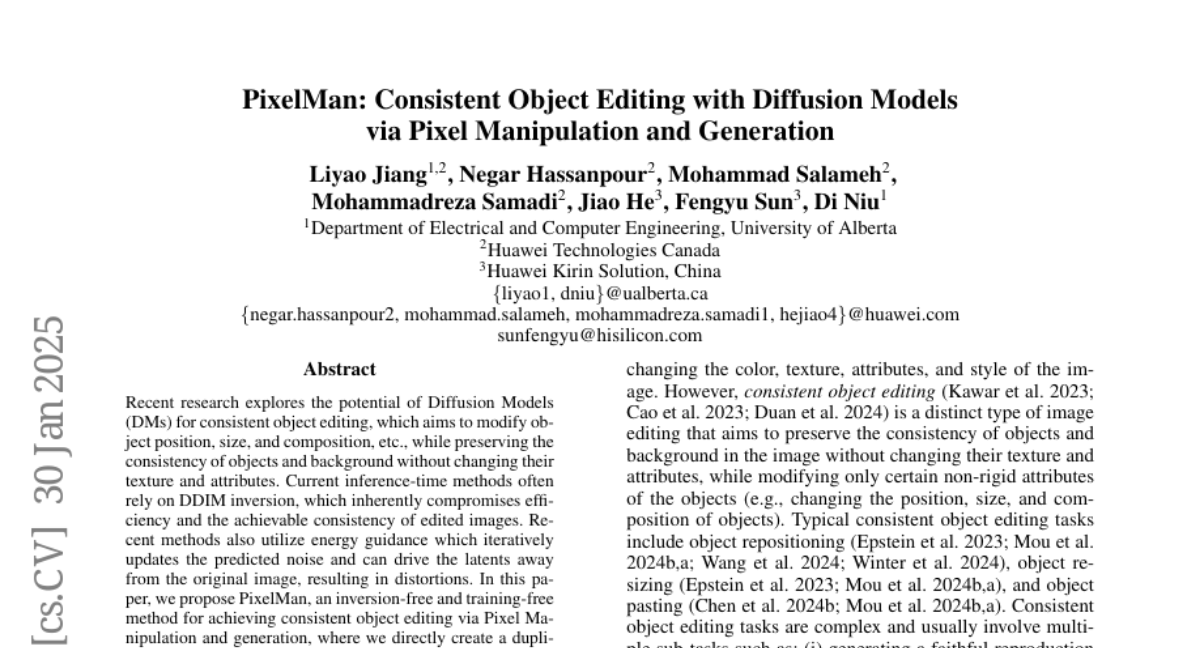PixelMan: Consistent Object Editing with Diffusion Models via Pixel Manipulation and Generation
Liyao Jiang, Negar Hassanpour, Mohammad Salameh, Mohammadreza Samadi, Jiao He, Fengyu Sun, Di Niu
2024-12-20

Summary
This paper talks about PixelMan, a new method for editing images that allows users to change the position, size, and composition of objects while keeping everything else in the image consistent. It does this without needing a lot of complicated steps or pre-existing edited images.
What's the problem?
Current methods for editing images often require a lot of time and steps to achieve good results. They can also lead to inconsistencies where the edited object doesn't match the background or looks unnatural. This is especially true when using techniques that rely on previous edits or complex calculations.
What's the solution?
PixelMan introduces a simpler approach called Pixel Manipulation and Generation. Instead of starting from an existing edited image, it directly creates a copy of the object in the desired location within the image. The method uses an efficient sampling technique to ensure that the object blends well into its new position while filling in any gaps left behind. This allows for high-quality edits in just a few steps, significantly fewer than traditional methods.
Why it matters?
This research is important because it makes image editing faster and easier, enabling users to create more realistic edits without needing extensive training or complicated processes. PixelMan can be particularly useful for artists, designers, and anyone working with visual content who wants to make quick and effective changes to images.
Abstract
Recent research explores the potential of Diffusion Models (DMs) for consistent object editing, which aims to modify object position, size, and composition, etc., while preserving the consistency of objects and background without changing their texture and attributes. Current inference-time methods often rely on DDIM inversion, which inherently compromises efficiency and the achievable consistency of edited images. Recent methods also utilize energy guidance which iteratively updates the predicted noise and can drive the latents away from the original image, resulting in distortions. In this paper, we propose PixelMan, an inversion-free and training-free method for achieving consistent object editing via Pixel Manipulation and generation, where we directly create a duplicate copy of the source object at target location in the pixel space, and introduce an efficient sampling approach to iteratively harmonize the manipulated object into the target location and inpaint its original location, while ensuring image consistency by anchoring the edited image to be generated to the pixel-manipulated image as well as by introducing various consistency-preserving optimization techniques during inference. Experimental evaluations based on benchmark datasets as well as extensive visual comparisons show that in as few as 16 inference steps, PixelMan outperforms a range of state-of-the-art training-based and training-free methods (usually requiring 50 steps) on multiple consistent object editing tasks.